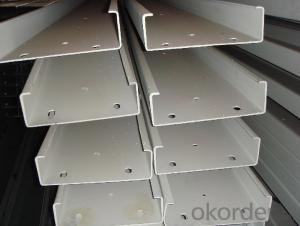Stainless steel rebar, a material that has been around for decades, is gaining significant attention in the construction industry. It’s not just another reinforcement material; it’s a game-changer. Known for its corrosion resistance, stainless steel rebar is becoming the go-to choice for many engineers and architects who are looking to create structures that are not only strong but also long-lasting.
But what makes stainless steel rebar stand out from the rest? Let’s dive into the world of stainless steel rebar and explore its unique properties, benefits, and applications.
The Heart of the Matter: Corrosion Resistance
Corrosion is the silent killer of steel reinforcements. Traditional carbon steel rebars are susceptible to corrosion when exposed to moisture and aggressive chemicals, which can lead to the weakening of the structure over time. This is where stainless steel rebar comes into play. With its exceptional corrosion resistance, stainless steel rebar can withstand harsh environments and maintain its strength for decades.
A Closer Look at the Material
Stainless steel rebar is made from a variety of stainless steel grades, with the most common being 304 and 316. These grades contain chromium, which forms a passive oxide layer on the surface, protecting the rebar from corrosion. The addition of other alloying elements, such as molybdenum in grade 316, further enhances the corrosion resistance.
The Benefits of Using Stainless Steel Rebar
1. Longevity: Stainless steel rebar can significantly extend the service life of a structure, reducing the need for maintenance and repairs.
2. Durability: It can endure harsh weather conditions and resist the effects of chloride-induced corrosion, which is common in marine environments.
3. Aesthetic Appeal: The sleek and modern look of stainless steel rebar can add a touch of elegance to any structure.
4. Sustainability: With its long lifespan, stainless steel rebar contributes to a more sustainable construction practice by reducing the need for replacement and minimizing waste.
5. Cost-Effectiveness: While the initial cost may be higher, the long-term savings in maintenance and durability make it a cost-effective choice.
Applications Beyond the Ordinary
Stainless steel rebar is not just for conventional construction projects. Its unique properties make it ideal for a variety of specialized applications:
– Marine Structures: Given its resistance to chloride-induced corrosion, it’s perfect for piers, docks, and other marine structures.
– Infrastructure in Aggressive Environments: Bridges in coastal areas, roads near chemical plants, and other structures exposed to aggressive elements can benefit from its use.
– Architectural Features: For projects that require a combination of strength and aesthetics, stainless steel rebar can be the perfect choice.
– Precast Concrete: The non-magnetic properties of stainless steel rebar make it suitable for precast concrete elements.
The Downside: Cost and Availability
While stainless steel rebar offers numerous benefits, it does come with some drawbacks. The cost of stainless steel rebar is higher than that of traditional carbon steel rebar, which can be a deterrent for some projects. Additionally, the availability of stainless steel rebar may be limited in certain regions, requiring special ordering and longer lead times.
The Future of Reinforcement
As the construction industry continues to evolve, the demand for sustainable and durable materials is on the rise. Stainless steel rebar, with its corrosion resistance and long-term performance, is poised to play a significant role in the future of construction.
Wrapping Up
Stainless steel rebar is more than just a reinforcement material; it’s a symbol of innovation and forward-thinking in the construction industry. As we move towards a future where sustainability and durability are paramount, stainless steel rebar is a choice that not only makes structural sense but also aligns with our environmental goals.
Embrace the change and consider stainless steel rebar for your next project. It might just be the key to creating a structure that stands the test of time.

